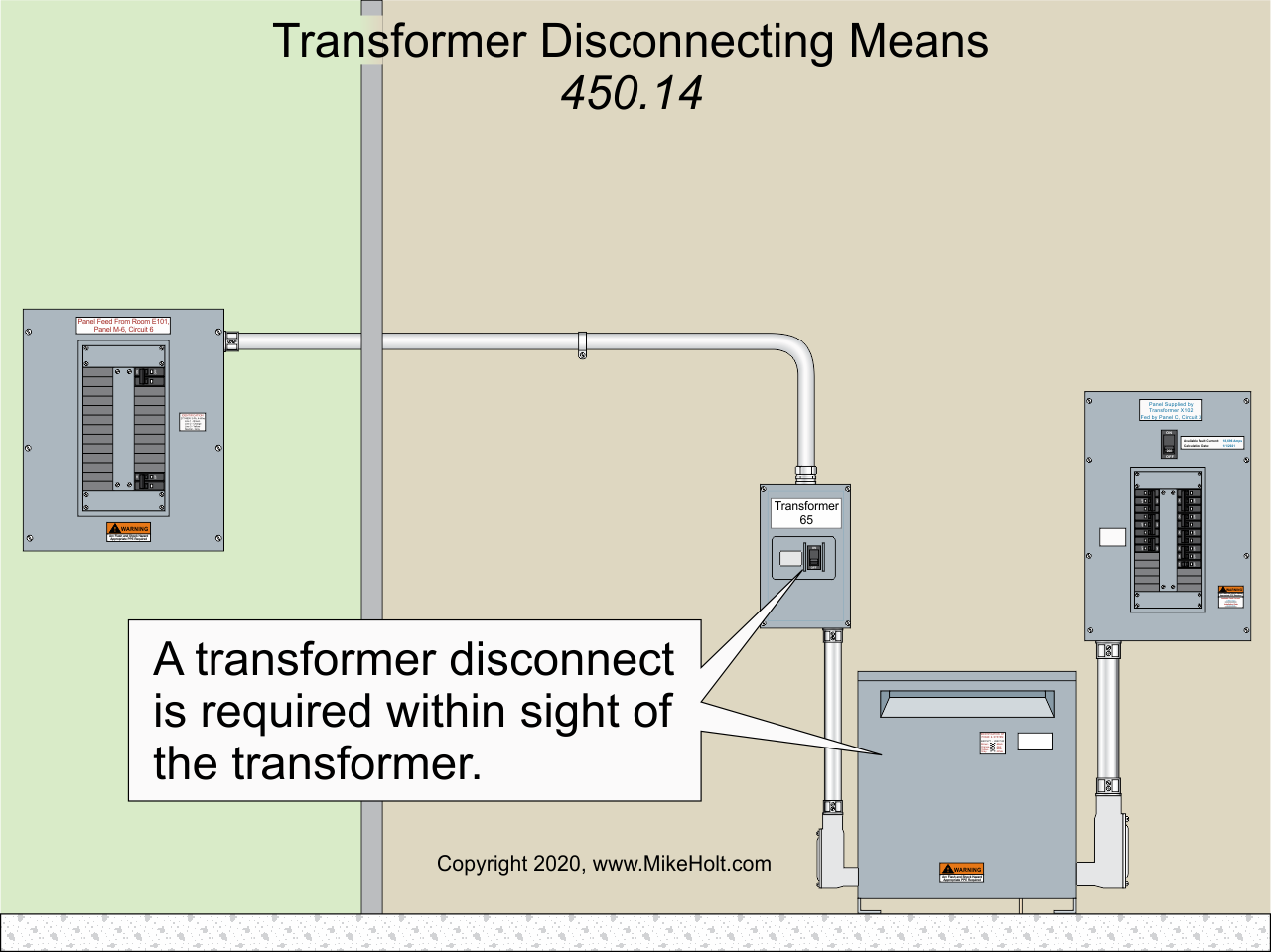|
For EC&M Magazine
By Mike Holt, NEC® Consultant
Here's the follow-up to yesterday's newsletter.
This includes the answers to the questions sent, so you can see how you did.


Figure 01
|
 |
|
Figure 01
|
For EC&M Magazine
By Mike Holt, NEC® Consultant
Here's the follow-up to yesterday's newsletter.
This includes the answers to the questions sent, so you can see how you did.

Note: The answers to these questions are based on the 2020 NEC.
Q1. What are the NEC requirements for transformer ventilation clearances?
A1. Transformers must be installed in accordance with the manufacturer's instructions, and their ventilating openings are not permitted to be blocked [110.3(B)]. The required clearances from the ventilation opening must be clearly marked on the transformer.
Q2. What is the NEC rule regarding disconnecting means on the supply side of a transformer?
A2. A transformer disconnect within sight of the transformer is required, unless the location of the disconnect is field marked on the transformer and the disconnect is capable of being locked in the open position with provisions for locking to remain in place whether the lock is installed or not [110.25] [450.14]. Figure 01
Author's Comment
â–ºWithin Sight means that it is visible and not more than 50 ft from the location of the equipment [Article 100].
Q3. What is the Code rule regarding accessibility of battery and cell terminations for storage batteries?
A3. (D) Accessibility. The terminals of all cells or multicell units must be readily accessible for readings, inspections, and cleaning where required by the equipment design. One side of transparent battery containers must be readily accessible for inspection of the internal components [480.4(D)]
4. Does the NEC require antioxidant for battery and cell terminations?
A4. Where connections between dissimilar metals occur, antioxidant material must be used where recommended by the battery manufacture.
Q5. What type of battery interconnections are allowed by the Code for Storage Batteries?
A5. Flexible cables, as identified in Article 400, in sizes 2/0 AWG and larger are permitted within the battery enclosure from battery terminals to a nearby junction box where they must be connected to an approved wiring method. Flexible battery cables are also permitted between batteries and cells within the battery enclosure. Such cables must be listed and identified for the environmental conditions. Flexible, fine-stranded cables may only be used with terminals, lugs, devices, or connectors in accordance with 110.14 [480.12].
|

